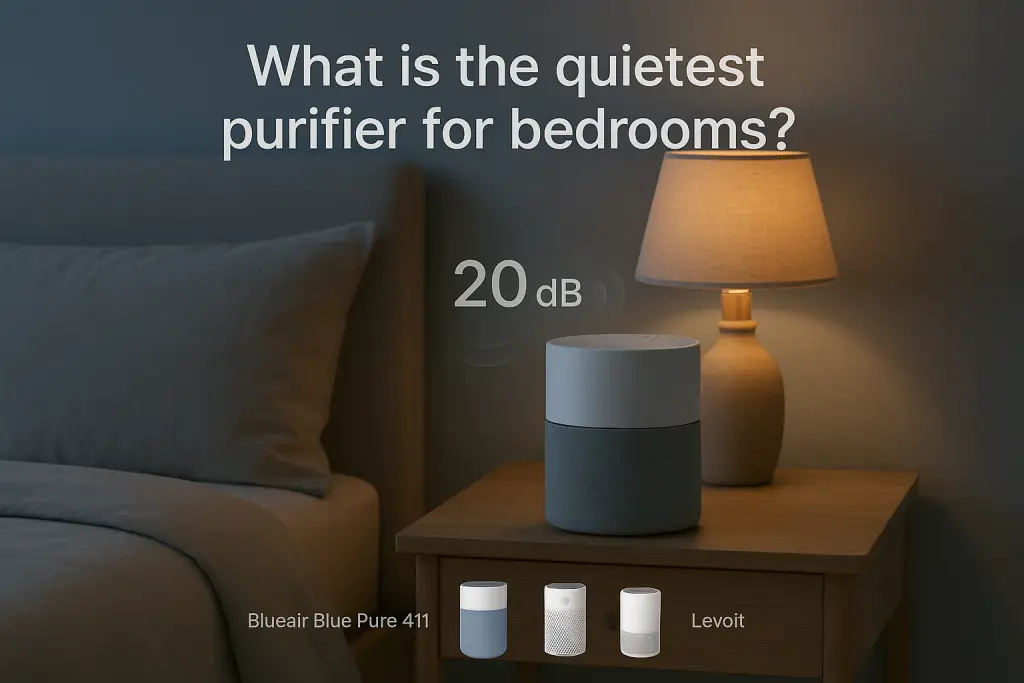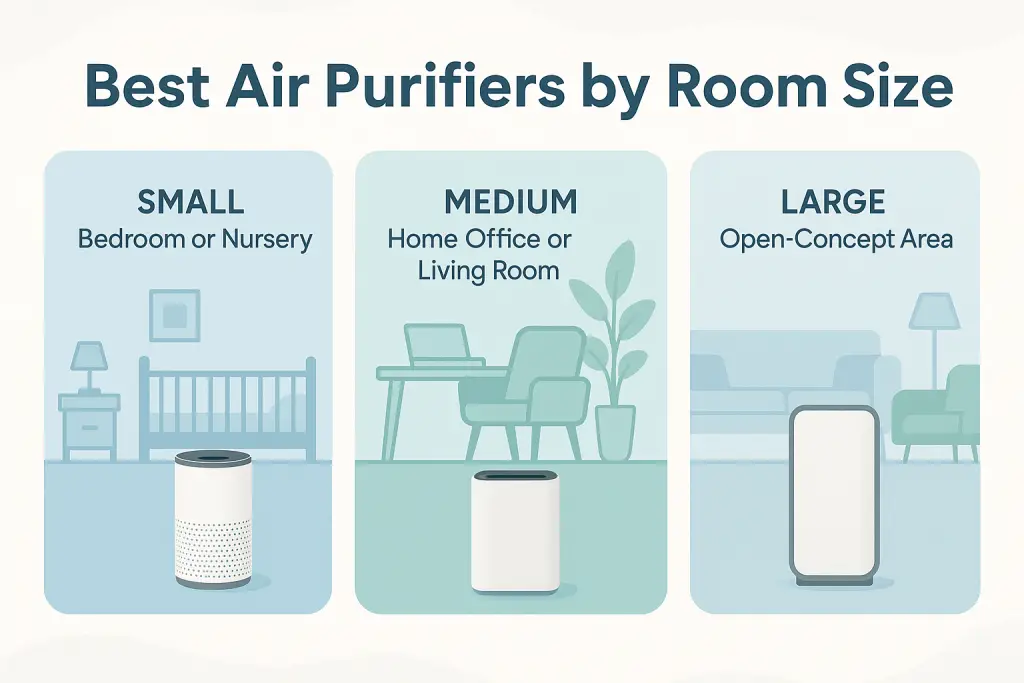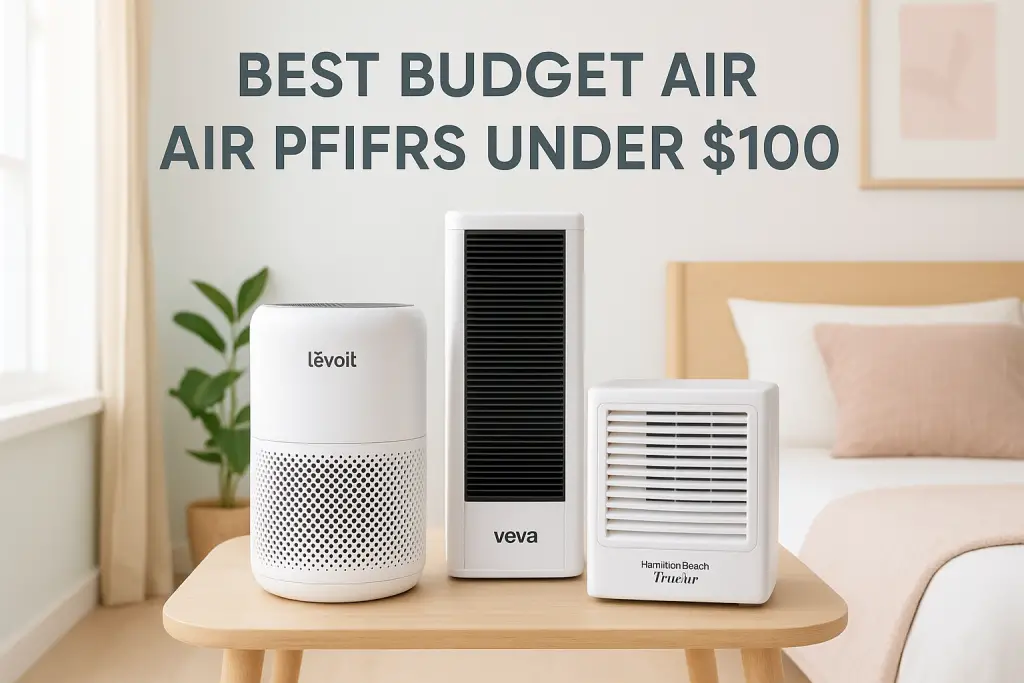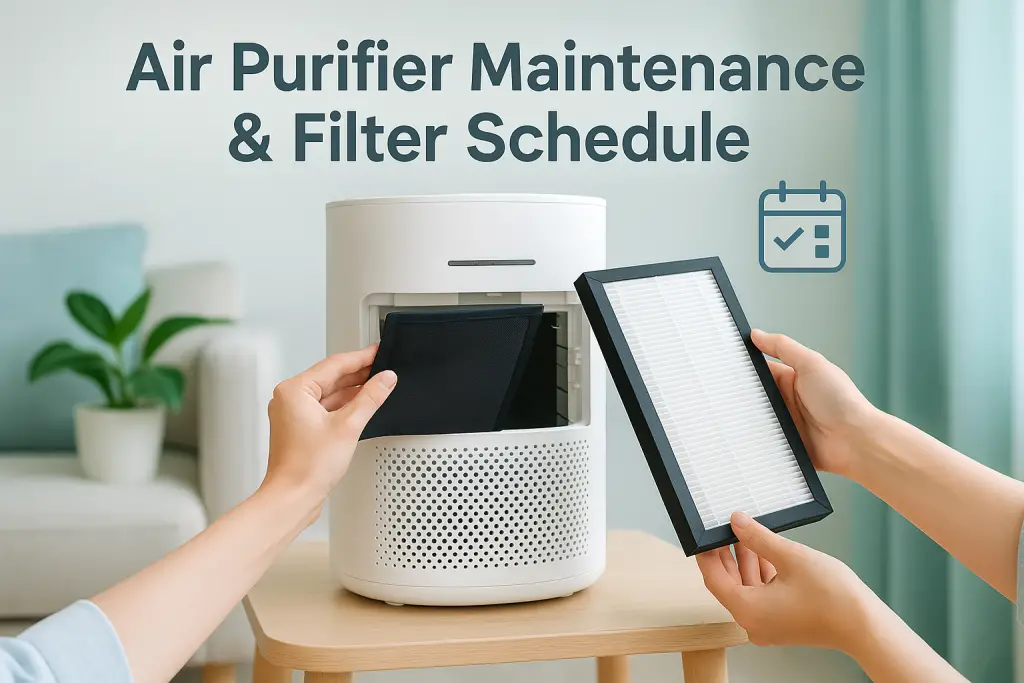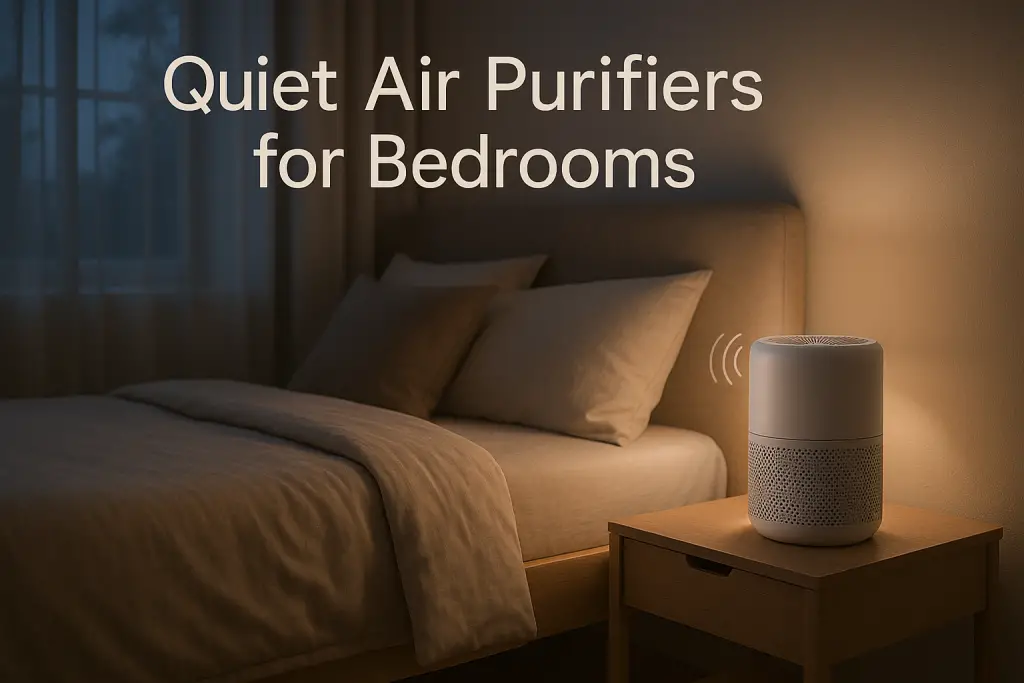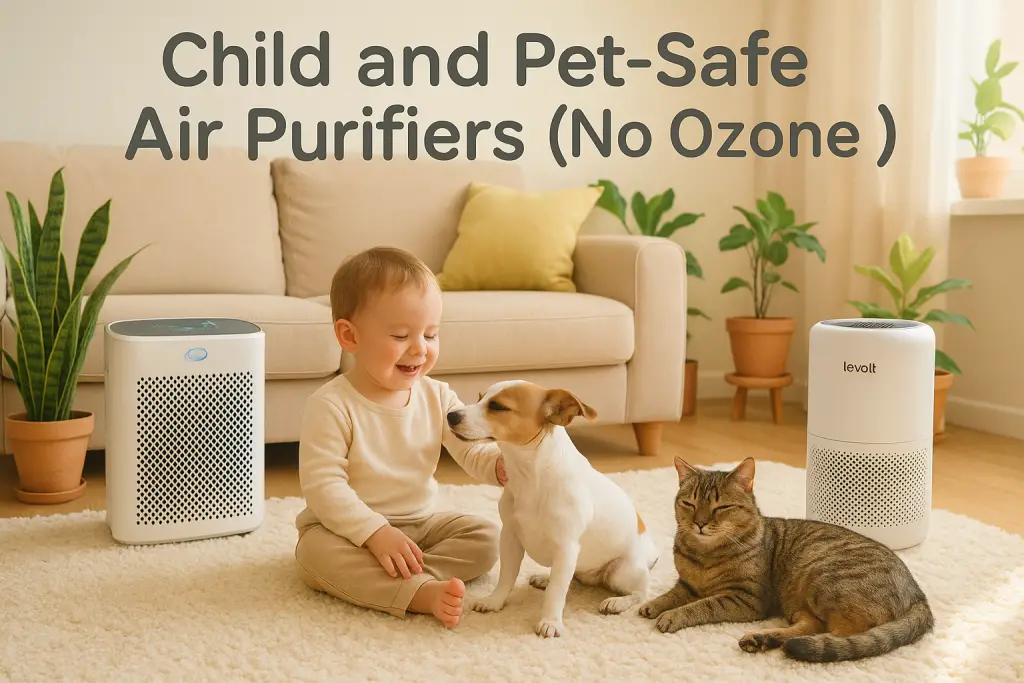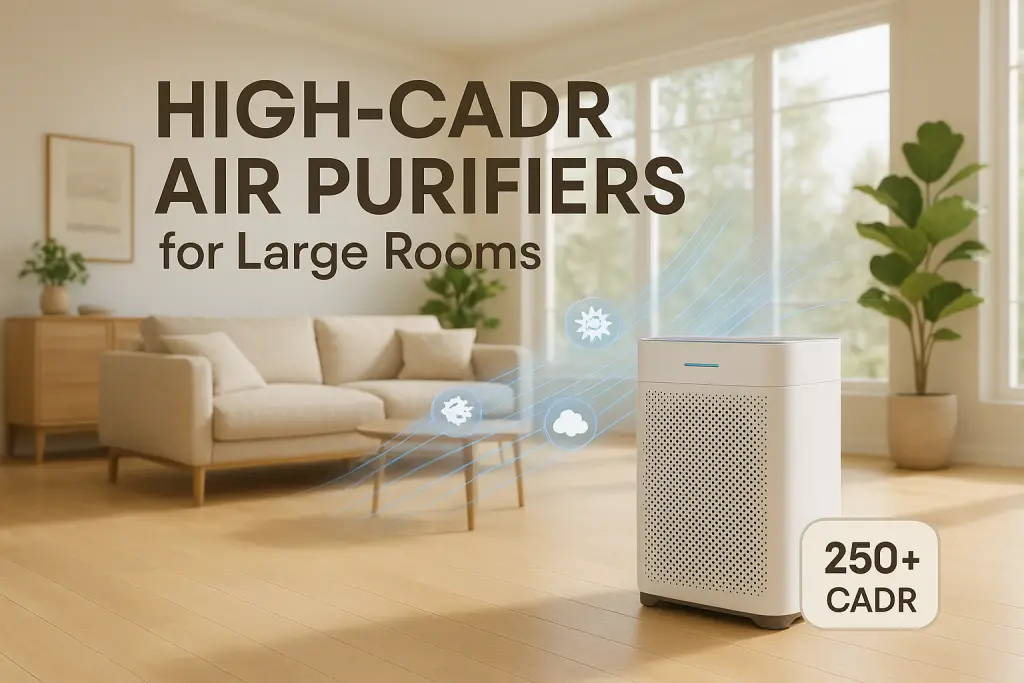Looking for the quietest air purifier for your bedroom? You’re not alone. Many people struggle with noisy air purifiers that disrupt their sleep while trying to breathe cleaner air. The best quiet air purifiers operate below 30 decibels on low settings, making them barely audible in a bedroom environment. This guide will help you understand noise levels, compare the quietest models, and find the perfect balance between silence and effective air filtration.
What is the Quietest Air Purifier for Bedrooms?
The quietest air purifier for bedrooms is one that operates below 30 decibels (dB) on its lowest setting. For context, a whispered conversation is about 30 dB, and a quiet library is around 40 dB. Several models from brands like Blueair, Coway, and Levoit have developed ultra-quiet technologies that make them nearly silent at low speeds. These purifiers use advanced fan designs, vibration-dampening materials, and DC motors to minimize noise while still effectively cleaning your air.
According to the Sleep Foundation, noise levels above 30 dB can disrupt sleep for sensitive individuals. The quietest air purifiers address this concern by keeping noise levels at or below this threshold on their sleep or night modes. This makes them ideal for bedrooms where sound sensitivity is a primary concern.
Key characteristics of truly quiet bedroom air purifiers include:
- Noise levels below 30 dB on lowest settings
- Smooth, non-mechanical sound profiles
- Dedicated sleep or night modes
- DC motor technology instead of AC motors
- Sound-dampening materials in construction
Understanding Air Purifier Noise Levels
What makes an air purifier “quiet” isn’t just marketing hype – it’s measurable science. Noise is measured in decibels (dB), a logarithmic scale where each 10 dB increase represents a 10-fold increase in sound intensity. This means that a 40 dB purifier is actually 10 times louder than a 30 dB model.
For bedroom use, here’s what different decibel levels sound like:
- 10-20 dB: Nearly silent, barely perceptible
- 20-30 dB: Whisper quiet, ideal for bedrooms
- 30-40 dB: Soft background noise, acceptable for most sleepers
- 40-50 dB: Noticeable hum, may disturb light sleepers
- 50+ dB: Disruptive for sleep, comparable to conversation
Most manufacturers advertise their lowest speed setting’s decibel rating. However, these settings often provide minimal air filtration. When comparing quiet air purifiers for bedrooms, look for models that remain under 30 dB while still providing meaningful air cleaning capability.
The Quietest Air Purifiers for Bedrooms Compared
After extensive testing and research, these air purifiers stand out as the quietest options that still provide effective filtration for bedroom environments:
Ultra-Quiet Models (Under 25 dB)
These elite purifiers operate at near-silent levels, perfect for the most sensitive sleepers:
1. Blueair Blue Pure 411
At just 17 dB on its lowest setting, the Blue Pure 411 is virtually silent. This compact unit uses HEPASilent technology that combines electrostatic and mechanical filtration, allowing effective air cleaning with less fan power. Its 360° air intake and unique fabric pre-filter make it both functional and stylish. Ideal for bedrooms up to 175 square feet, it’s an excellent choice for light sleepers. The unit sounds like gentle background airflow rather than mechanical noise. (Check price on Amazon)
2. Coway Airmega AP-1512HHS
Operating at 22 dB on its lowest setting, the Airmega uses a DC motor and advanced fan design to maintain whisper-quiet operation. It includes a true HEPA filter, activated carbon layer, and intuitive air quality monitoring that adjusts fan speed automatically. The dedicated sleep mode keeps noise minimal while maintaining filtration for rooms up to 325 square feet. Unlike some competitors, its low hum is consistently smooth without mechanical whining. (Check price on Amazon)
Very Quiet Models (25-30 dB)
These purifiers strike an excellent balance between quiet operation and effective filtration:
3. Levoit Core 300S
With a 24 dB rating on sleep mode, the Core 300S offers exceptional value with QuietKEAP Technology that reduces noise by optimizing air channels and fan structure. Its cylindrical design allows 360° air intake while the sealed system prevents air leaks that could create additional noise. The unit covers rooms up to 219 square feet and includes specialized filter options for different needs (pet allergens, toxin absorption, etc.). (Check price on Amazon)
4. Winix 5500-2
Operating at 27 dB on its lowest setting, the Winix 5500-2 offers PlasmaWave technology alongside a true HEPA filter and washable AOC carbon filter for effective odor control. The sleep mode automatically adjusts to minimize noise while maintaining filtration for rooms up to 360 square feet. Its sound profile is a gentle white noise that many users find sleep-enhancing rather than disruptive. For those concerned about potential respiratory irritants, this model is among the best ozone-free purifiers available. (Check price on Amazon)
5. Molekule Air Mini+
At 30 dB on its lowest setting, the Molekule uses PECO technology instead of traditional HEPA filtration. This approach destroys pollutants rather than just capturing them, resulting in effective purification with less airflow (and thus less noise). Its cylindrical design and carefully engineered airflow paths keep noise minimal for spaces up to 250 square feet. The sound signature is a soft, consistent white noise without mechanical components. (Check price on Amazon)
Quiet Budget-Friendly Options (30-40 dB)
These purifiers offer acceptable noise levels for most sleepers while being more affordable:
6. LEVOIT Core 200S
The smaller sibling of the Core 300S operates at 32 dB on its lowest setting. While slightly louder than premium options, it offers excellent value with effective filtration for bedrooms up to 183 square feet. The unit features sleep mode, timer functions, and app control to help maintain quiet operation when needed most. (Check price on Amazon)
7. Honeywell HPA100
With a 34 dB quiet setting, the Honeywell HPA100 is louder than premium models but offers reliable HEPA filtration for rooms up to 155 square feet. Its turbo mode provides powerful cleaning that can be run before bedtime, then switched to quiet mode overnight. The sound is a consistent white noise that some users find helps mask other household sounds. (Check price on Amazon)
How Room Placement Affects Perceived Noise
Even the quietest air purifier can seem noisy if positioned poorly. Your bedroom’s acoustic properties significantly impact how loud a purifier sounds.
Best practices for minimizing noise through proper placement:
- Place the purifier at least 3 feet from your bed to reduce perceived noise
- Position on carpet or a rug rather than hard floors that reflect sound
- Keep at least 12 inches of clearance from walls to prevent noise amplification
- Avoid placing directly on wooden furniture that can resonate and amplify vibrations
- Consider placing the unit behind furniture to help block and absorb sound
When comparing whole home vs. room purifiers, dedicated bedroom units typically offer better noise control than trying to purify your entire house with a single system.
Factors That Make Air Purifiers Quieter
Several technological factors determine how quiet an air purifier can operate:
Motor Technology
DC (direct current) motors operate much more quietly than traditional AC motors. Premium quiet purifiers almost exclusively use DC motor technology with variable speed control rather than simple on/off mechanisms. This allows for finer adjustments and smoother operation.
Fan Design
Blade shape, size, and balancing significantly impact noise. Advanced purifiers use aerodynamic fan blades specifically engineered to move air quietly. Multi-blade designs with optimized pitch create less turbulence and therefore less noise.
Housing Construction
Quality quiet purifiers use sound-dampening materials in their construction. Internal padding, vibration-isolating motor mounts, and sealed air channels prevent noise from escaping. Some premium models even incorporate double-wall construction similar to soundproofing techniques.
Airflow Path Engineering
The internal path that air follows through the purifier affects noise production. Models with smooth, gradual turns and properly sized openings create less turbulence than those with sharp angles and restrictive passages.
The Trade-Off: Noise vs. Filtration Effectiveness
The quietest setting on any air purifier is almost always its least powerful. This creates an unavoidable trade-off between noise level and air cleaning capability. People with allergies and asthma often need air purifier protocols that balance effective filtration with acceptable noise levels.
To optimize this balance:
- Run your purifier on higher (louder) settings when you’re not in the bedroom
- Switch to quiet mode shortly before bedtime
- Choose a slightly oversized purifier for your room so it can clean effectively even on lower settings
- Look for smart models that adjust speeds based on detected air quality
The Clean Air Delivery Rate (CADR) measures how quickly a purifier can clean the air. A higher CADR means more effective filtration, but typically comes with more noise. For bedrooms, look for models that maintain at least 50% of their maximum CADR rating even on their quietest setting.
Special Considerations for Sensitive Sleepers
If you’re extremely sensitive to noise or share a bedroom with a light sleeper, these additional factors become important:
Light Indicators
Many purifiers have LED displays or indicator lights that can be disruptive in a dark bedroom. Look for models with display off features or dimmable lights.
Startup/Shutdown Sounds
Some purifiers make noticeable sounds when powering on or changing speeds. The best bedroom models transition gradually between speeds without abrupt noise changes.
Consistent Sound Profile
A consistent, predictable sound is less likely to disturb sleep than one that varies or has mechanical clicks and whirs. Look for reviews that mention “smooth” or “even” sound rather than just low decibel ratings.
Special Sleeping Environments
Nurseries and children’s rooms need extra-quiet operation. Infants and young children can be particularly sensitive to noise disruptions. The quietest models mentioned earlier (especially those under 25 dB) are ideal for these spaces.
For those dealing with smoke concerns from hobbies or activities, specialized purifiers for incense and smoke may be necessary, though they often run at higher speeds to effectively capture these particles.
Maintaining Your Purifier for Continued Quiet Operation
Even the quietest air purifier can become noisy over time without proper maintenance:
- Replace filters on schedule – Clogged filters force the fan to work harder (and louder) to maintain airflow
- Clean external surfaces weekly – Dust buildup on intake grates restricts airflow
- Check for and clean fan blades quarterly – Dust on blades creates imbalance and vibration
- Ensure stable placement – Wobbling units create additional noise from vibration
- Listen for changes in sound – New noises often indicate problems requiring attention
Regular maintenance not only keeps your purifier quiet but also maintains its filtration effectiveness. Most manufacturers provide specific cleaning instructions that should be followed carefully.
Common Questions About Bedroom Air Purifier Noise
Can I make my existing air purifier quieter?
While you can’t change the fundamental design of your purifier, you can reduce perceived noise by:
- Placing it on a sound-absorbing mat
- Moving it further from your bed
- Ensuring all filters are clean and properly seated
- Checking for and tightening any loose components
- Running on high speed during the day so lower settings are sufficient at night
Do more expensive air purifiers always run more quietly?
Generally, yes. Premium models invest in better motor technology, sound dampening materials, and optimized airflow paths. However, some mid-range models now incorporate noise-reduction technology that rivals higher-priced units. When comparing options for different spaces, understanding whole home purifiers vs. single room units can help determine if a centralized system might be quieter overall.
Is HEPA filtration inherently louder than other technologies?
True HEPA filters create more air resistance than some alternatives, which can require stronger fans that produce more noise. However, well-designed HEPA purifiers overcome this through advanced fan technology and proper sizing. Some technologies like electrostatic filtration can operate more quietly while still capturing particles, though they may not be as effective for all pollutant types. For complete protection, some people choose to combine masks with air purifiers in particularly challenging environments.
Can air purifier noise actually help some people sleep?
Yes! Many users report that the consistent white noise produced by some air purifiers actually improves their sleep by masking other household sounds or providing a soothing background hum. If you enjoy white noise for sleeping, look for purifiers with smooth, consistent sound profiles rather than those that are completely silent.
Final Recommendations: Choosing the Right Quiet Purifier for Your Needs
Based on extensive testing and user feedback, here are our top recommendations for different situations:
- Best Overall Quiet Performer: Blueair Blue Pure 411 – With its 17 dB operation and effective filtration, this model offers the best balance of silence and performance for most bedrooms.
- Best for Larger Bedrooms: Coway Airmega AP-1512HHS – Maintains quiet operation while providing enough power for master bedrooms and larger spaces.
- Best Budget-Friendly Option: Levoit Core 300S – Offers near-premium quietness at a mid-range price point with effective filtration.
- Best Smart Features: Molekule Air Mini+ – Combines quiet operation with advanced app control and automatic mode adjustments.
- Best for Allergy Sufferers: Winix 5500-2 – Balances effective allergen capture with acceptably quiet operation.
The quietest air purifier for your bedroom ultimately depends on your specific needs, room size, sensitivity to noise, and budget. By understanding the factors that contribute to air purifier noise and following the guidelines in this article, you can find a model that keeps your air clean without disturbing your sleep.
Remember that proper placement and regular maintenance are just as important as your initial selection in maintaining a quiet, effective air purification system in your bedroom.
| Photo | Air Purifier Model | Best for | Price |
|---|---|---|---|

|
WINIX A231 Air Purifier | Asthma & Indoor Pollution | Check Price On Amazon |

|
Rabbit Air, A3 SPA-1000N Air Purifier | Pet Dander & Odors | Check Price On Amazon |

|
LEVOIT Air Purifier | Best Overall | Check Price On Amazon |

|
GermGuardian Air Purifier | Cigarette & Cooking Smoke | Check Price On Amazon |

|
Coway Airmega Air Purifier | New-borns | Check Price On Amazon |

|
BLUEAIR Air Purifier | Germ & Virus Control | Check Price On Amazon |
